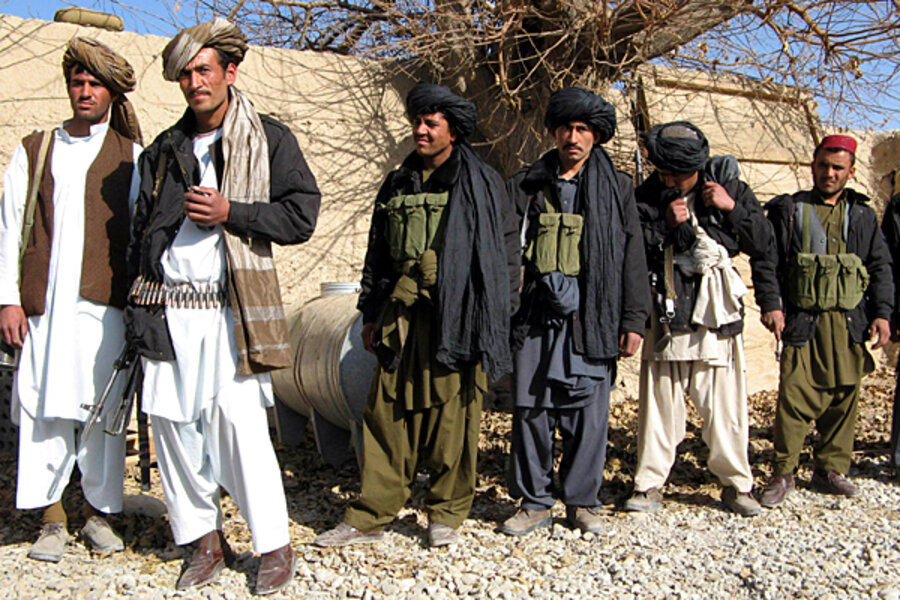US deal with Afghan tribe promises to reduce Taliban strikes
Loading...
| Kabul, Afghanistan
An agreement between a prominent local tribe and US and Afghan forces in one of the most contested areas of Afghanistan to help stop Taliban attacks could mark an important moment in the war.
News of the deal has sparked much interest throughout Afghanistan and among NATO commanders, and drawn some comparison with efforts in Iraq to use tribal influence against the insurgency there. But it remains unclear how much it can achieve.
“This is very important for the people of Helmand and the government of Helmand. We hope that other areas will do the same thing and be encouraged by this example. Maybe in the future this process will get bigger and bigger,” says Daoud Ahmadi, the spokesperson for the governor of Helmand.
Tribal representatives speak only for their small collection of villages, not the entire tribe or district. So far, no other tribes appear to have made similar agreements.
Alikozai tribal elders, who say they were authorized to speak for the Taliban, approached local government officials nearly a month ago about creating a peace agreement in Sarwan Qala, a network of about 30 villages in Helmand Province’s Sangin district.
In exchange for the release of a local Taliban leader, the village elders agreed to stop Taliban attacks and no longer allow foreign militants into their area, says Shamsullah Sahrayee, a local analyst who is originally from Sarwan Qala but currently lives in Lashkar Gah, the provincial capital.
“In the area of Sarwan Qala people are happy with this, but if you look at Sangin there are many more tribes and I don’t know if they will be happy with this agreement or not,” he says.
The Sangin district has been one of the most violent regions in all of Afghanistan. British forces saw a third of their fatalities there before handing over the area to US Marines this fall.
In 2006, the British made a similar peace deal with the Taliban in Helmand Province’s Musa Qala district. The Taliban, however, reclaimed the area within months. Due to that turn of events, it appears, the NATO-led International Security Assistance Force (ISAF) has been careful not to overstate the outcome of this latest deal.
“We are cautiously optimistic about this development. We are taking a wait-and-see approach, and are not speculating at this time on potential future implications,” says an ISAF official. “The proof of success will be in whether or not the Taliban abide by the agreement they made with the village elders and provincial leaders.”
Some analysts worry that this agreement will have little more than a localized impact.
“[T]he Alikozai tribe speaks for only a small portion of Sangin (not to mention the potential impact of tribal rivalries) while the provincial government in Helmand has very little ability to impose or enforce much of anything on its own,” said the Texas-based intelligence group STRATFOR in an analysis of the peace deal released to the media.
Despite the limitations of the deal, the move is being heralded as a major step forward and a sign of potential progress in Afghanistan. Most newspapers in Kabul carried front-page stories about it.





